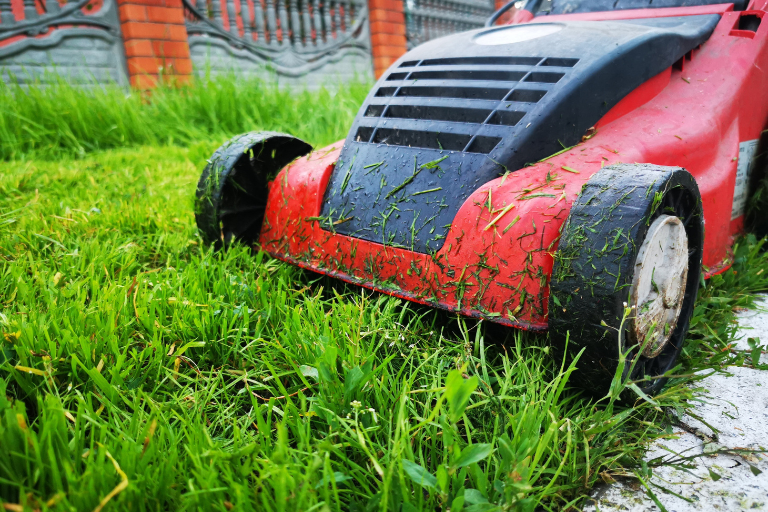Unlock the secret to a healthy lawn with our guide on how often to sharpen lawnmower blades, including signs of dull blades and more.
Continue to learn by also reading our step-by-step article on sharpening lawn mower blades using very simple steps.

Introduction
Keeping your lawn looking its best is not just about regular mowing. It’s also about how well your mower performs its job. A key factor in this performance is the sharpness of your lawnmower’s blade.
A keen, sharp blade cuts grass cleanly, whereas a dull blade tears the grass. This tearing can leave your lawn looking uneven and brown, as torn grass tips dry out quickly.
More importantly, these tears create openings for pathogens to enter the grass blades. This increases the risk of disease and pest infestation that could compromise your lawn’s overall health.
How Often Should You Sharpen Lawnmower Blades?
There isn’t a one-size-fits-all answer to how frequently you should sharpen your lawnmower blades. It largely depends on how often you mow and what type of terrain you’re dealing with. However, as a general rule, most lawn care experts agree that you should sharpen your lawnmower blades at least once or twice per mowing season.
The IDEAL Frequency for Sharpening Your Blades
The general rule of thumb suggests that you should sharpen your lawnmower blades every 20-25 hours of use.
But remember, this is a broad guideline and not an ironclad rule. When we say “hours of use”, we’re talking about the actual time spent mowing the lawn, not just having the machine switched on.
So if you spend half an hour each week mowing your lawn, you would need to sharpen your blades roughly every 40-50 weeks. However, there’s more to consider than simply setting a reminder in your calendar.
| Criteria | Recommendation |
| Average Homeowner | Every 25 hours of use |
| Minimum Requirement | Once every season |
| For Optimal Lawn Health | Two to three times per season |
Factors That Change Blade Sharpening Frequency
The size and type of grass on your lawn significantly influence the frequency at which you should sharpen your lawnmower blades. If you are blessed with a large lawn to cut or if the grass species in your yard is tougher than average, like Bermuda or Zoysia, it needs more frequent blade sharpening sessions.
If you mow over rocky soil or hit an unseen object hiding in the grass such as roots or toys frequently, this will blunt your blade faster than clean cutting grass alone. In such cases, inspection and proactive blade maintenance becomes even more crucial.

Winterizing Your Mower: End-of-Season Blade Care
Before you store away your lawnmower, it is important to ensure proper end-of-season blade care. This is often overlooked in the hustle and bustle of winterizing homes. Preparing your mower for winter involves cleaning the deck, draining or stabilizing fuel, and importantly, inspecting the blade.
If you see any damage when inspecting or if you’ve mowed a considerable area over summer (say half an acre or more), it’s time for sharpening. This way, when spring springs again, your lawnmower will be ready to go right off the bat.
How to tell if your lawn mower blade needs sharpening
Closely inspect your lawn right after mowing. If you notice an uneven cut with some areas appearing jagged or torn rather than cleanly sliced, it might be due to a dull blade. Not all indications are seen in the aftermath of mowing though. Sometimes you need to look directly at the blade itself.
Over time, mower blades may show physical signs of wear like nicks or dents along its cutting edge. Furthermore, if you see any bends in the blade itself or if it looks worn down overall compared to new ones—guess what?
You likely need some sharpening action going. Some blades may display a shiny or polished edge. This might initially seem like a good thing, but it’s usually an indication of blade dullness caused by repeated friction against grass.
Read the full article on 7 Signs You Have a Dull Lawn Mower Blade
Conclusion
Regular sharpening, typically every 20-25 hours of use, ensures clean cuts, promotes grass health, and extends the life of your mower.
By paying attention to signs of dullness, such as uneven cuts or ragged grass tips, and incorporating sharpening into your lawn care routine, you’ll enjoy a more beautiful and healthy lawn.









